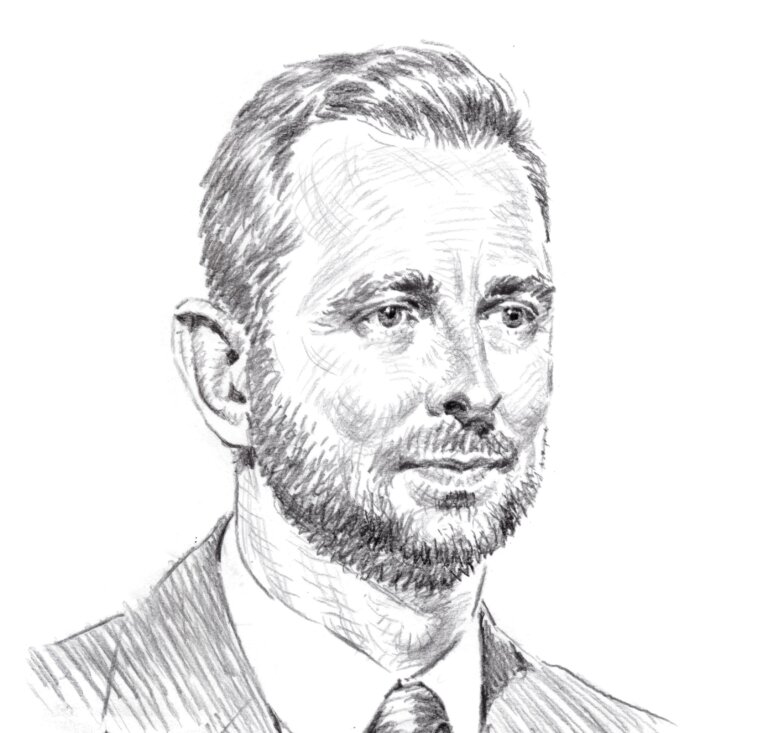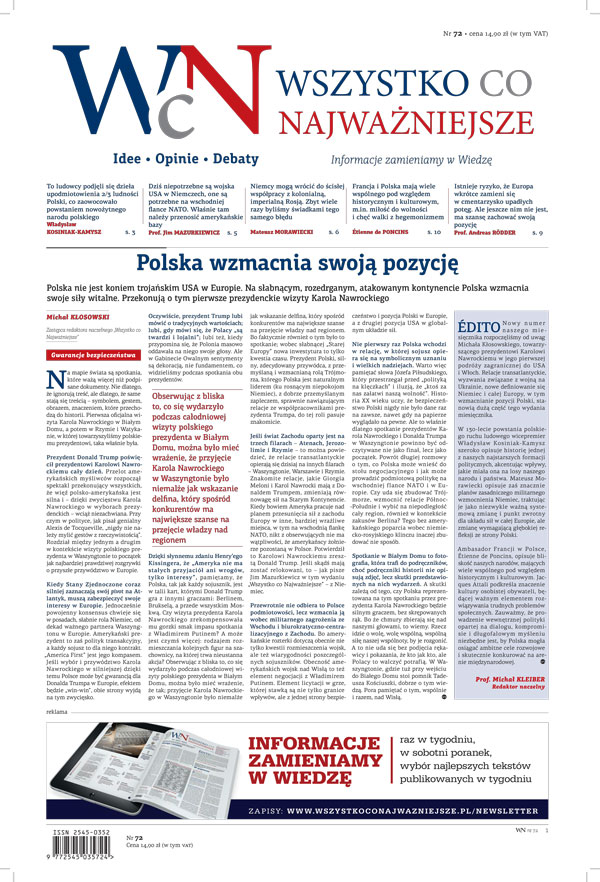
 130th Anniversary of the Polish People’s Party
130th Anniversary of the Polish People’s Party
The Polish People’s Movement is one of the oldest political formations in the country, with a history spanning 130 years. Alongside the nationalist and socialist camps, it is one of the three major political forces that shaped the fate of the Polish nation and state in the 20th century. It took part in the struggle for Poland’s independence during both the partitions and the Nazi occupation. The movement’s iconic figures, Wincenty Witos, Maciej Rataj, Stanisław Mikołajczyk and Władysław Reymont, belong to the pantheon of the most distinguished Poles.
.Arguably, no other force in the country has contributed as much to the development of democracy as the People’s Movement. It was the peasants who undertook the task of empowering two-thirds of the Polish population, which ultimately led to the emergence of a modern Polish nation encompassing all social classes on equal terms. The People’s Party consistently championed democracy during the interwar period and in the harsh realities of communist rule. These efforts culminated in the formation of the Great Coalition and the peaceful establishment of Tadeusz Mazowiecki’s first democratic government. The Polish People’s Party (PSL) is the rightful heir to the Polish People’s Movement. While not everyone may be aware of it, it is no secret that the PSL played a pivotal role in Poland’s accession to the European Union and NATO, as well as in the adoption of the Constitution of the Third Republic of Poland, which is still in force today.
Principles and Values
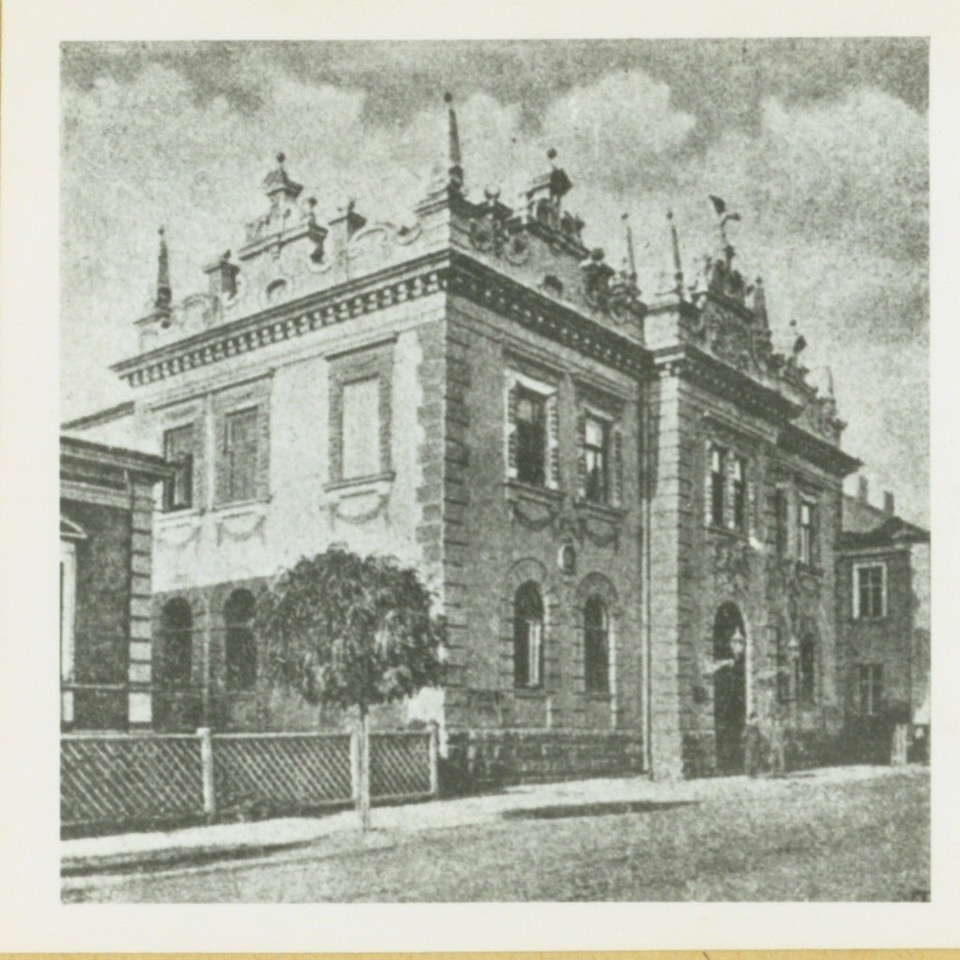
.For 130 years, the Polish People’s Movement has consistently affirmed its national character, drawing on the traditions of independence, democracy and Christianity. At its core stood the human being and the ideal of social justice, values encapsulated in its slogan: ‘Land, Power and Education for the People.’ The three guiding principles laid out by Wincenty Witos remain just as relevant to the movement today. They are both an instruction and a moral compass. He wrote: ‘The first and most important: to safeguard the independence and strength of the State. The second: to strive for the full implementation of a democratic order in our country. The third: to constantly and steadfastly defend civil rights and the people’s interests – interests that belong to the entire Polish society.’
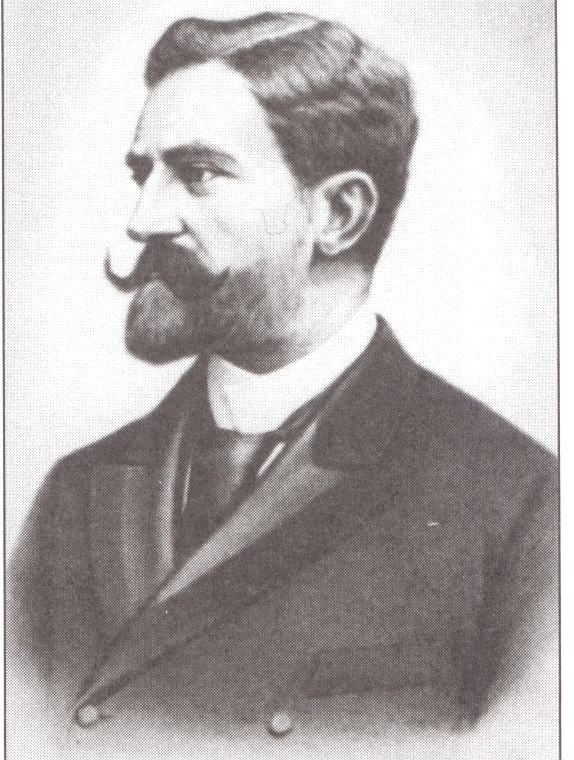
The Origins
.The first peasant party, the People’s Party, was formed under the partitions, in Galicia, on 28 July 1895. The Polish intelligentsia was the inspiration behind its creation. Soon, peasant groups began to appear in the Polish lands subject to Russian and Prussian rule. Throughout its 130-year existence, the People’s Party has been involved in over 50 political entities. Yet it has always been far more than just a party – it has been a broad and influential social movement. It encompassed a rich network of social, economic, cultural and educational organisations shaped by the values of the rural population. These organisations included agricultural circles, cooperatives, volunteer fire brigades, teachers’ associations, choirs, amateur theatre troupes and folk ensembles, the youth movement and numerous rural youth clubs and unions.
The Polish People’s Movement was never merely another peasant party, many of which sprang up in Poland. It grew out of Poland’s democratic traditions born during the partitions. Its roots lay in the drive to democratise electoral law and bring the broadest possible segments of society – including the peasantry – into public life. The programme of the first People’s Party was written by members of the Polish intelligentsia, many of whom came from the ranks of the nobility. The movement’s goal was to bind the peasantry to the thousand-year history of the Polish state. The subsequent adoption of the name ‘Piast’ by the party is a telling symbol of this historical continuity. Karol Lewakowski, the party’s first president, a townsman by birth and a lawyer by profession, believed that without the peasants, Poland could never be truly free. He wanted the peasants to link their struggle for a better life with the fight for their homeland’s sovereignty.
Fighting for Independence
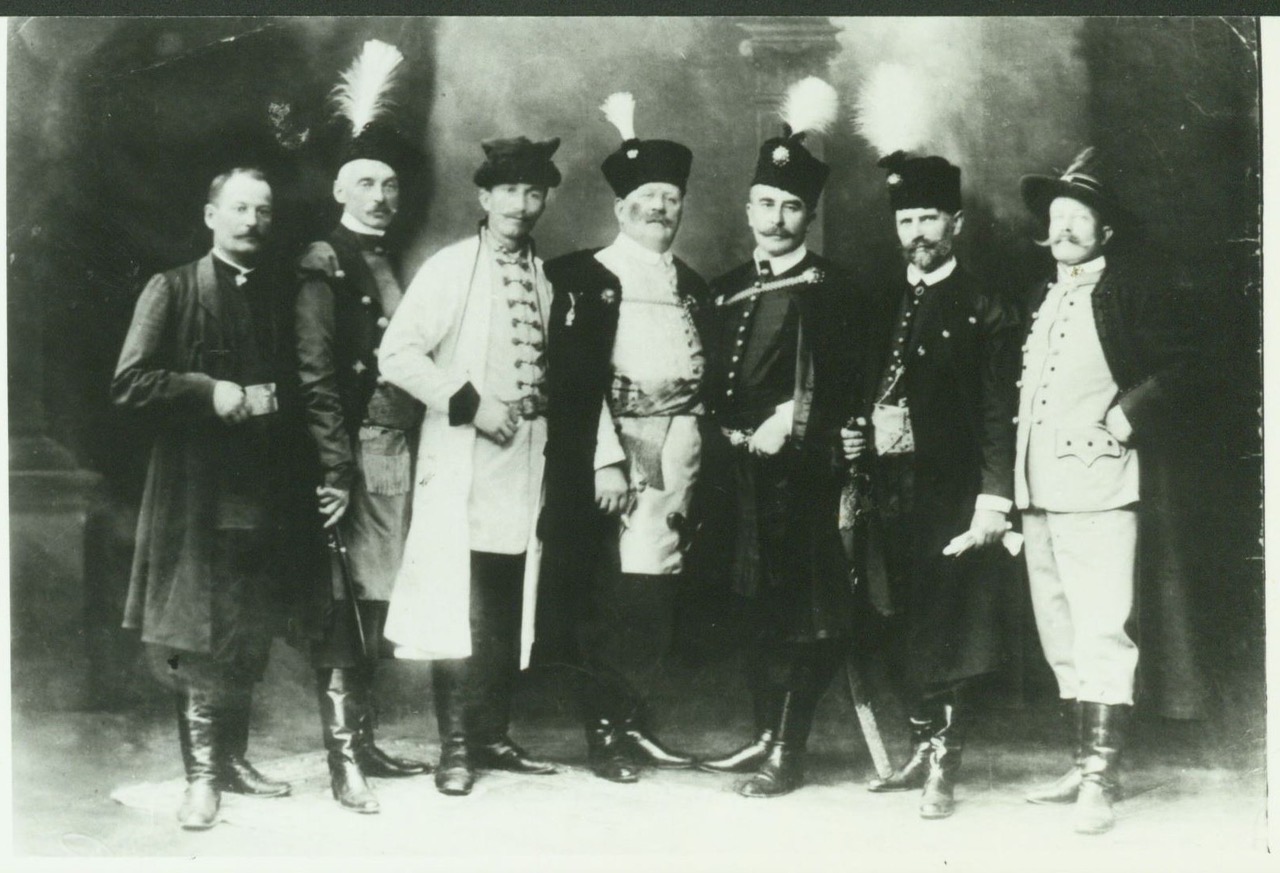
From left: Michał Jedynak, Włodzimierz Tetmajer, Wincenty Witos, Władysław Długosz, Zygmunt Lasocki, Klaudiusz Angerman, Antoni Bomba.
.From the outset of the First World War, all peasant parties became actively involved in the struggle for independence. Peasants in both Galicia and Congress Poland joined all political initiatives aimed at coordinating the activities and uniting the independence organisations.
On 27 February 1903, at a convention in Rzeszów, Galician members of the People’s Party made a symbolic and strategic move: to underscore the national character of their political formation and highlight the importance of the struggle for the homeland’s sovereignty, they changed the party’s name from Stronnictwo Ludowe (People’s Party) to Polskie Stronnictwo Ludowe (Polish People’s Party). It was in autonomous Galicia, under Austrian partition, that a strong current of national and pro-independence thought began to take shape – and the People’s Party played a key role in that process. Its members not only initiated but also actively collaborated in a wide array of undertakings aimed at regaining national sovereignty. Among these efforts were grassroots initiatives to form armed units. A growing number of paramilitary organisations began to emerge. These included: Strzelec, Związek Strzelecki (the Riflemen’s Association), Polskie Drużyny Strzeleckie (Polish Rifle Squads), Polowe Drużyny ‘Sokole’ (Sokół Field Squads), Drużyny Bartoszowe (Bartosz Squads), Drużyny Towarzystwa im. Tadeusza Kościuszki (Squads of the Tadeusz Kościuszko Society), and Drużyny Podhalańskie (Podhale Squads). The men who joined these ranks would form the first cadre of the Polish Legions.
Rural youth and members of the People’s Movement joined the newly emerging paramilitary formations not only for political reasons but also out of a deep conviction that should war erupt, they would be ready to serve their homeland in arms. They actively supported all military efforts aimed at rebuilding the Polish armed forces and restoring national sovereignty.
On 16 August 1914, the Polish Circle convened in Kraków and established the Supreme National Committee (Naczelny Komitet Narodowy), which included representatives of the People’s Party. It was conceived as the highest political, military and financial authority of Poles in Galicia. The Committee swiftly organised a national military force known as the Polish Legions. Equally vital was the participation of the People’s Party in the establishment and development of the Polish Military Organisation (Polska Organizacja Wojskowa), created in Warsaw on Piłsudski’s initiative in August 1914 to fight the Russian occupier. On 16 May 1917, during a session of the Polish Circle in Vienna, Włodzimierz Tetmajer, a PSL ‘Piast’ deputy, introduced a resolution drafted with the significant contribution of Wincenty Witos. It proclaimed the restoration of Polish independence as the nation’s singular and overriding goal. The resolution was met with great enthusiasm and formally adopted on 28 May 1917 during a gathering of Polish deputies in the grand council chamber of Kraków’s City Hall.
On 28 October 1918, during a meeting of Galician deputies in Kraków, the Polish Liquidation Commission was established. It was a temporary governing body for the territories of the Austrian partition, whose task was to dissolve the state and legal ties linking Galicia to Austria-Hungary and, in doing so, to take power from the Austrians and hand it over to a future Polish government. The Commission brought together representatives of all political parties, including PSL ‘Piast’ and PSL-Left, and was chaired by Wincenty Witos of ‘Piast’.
Protecting the State and Civil Rights
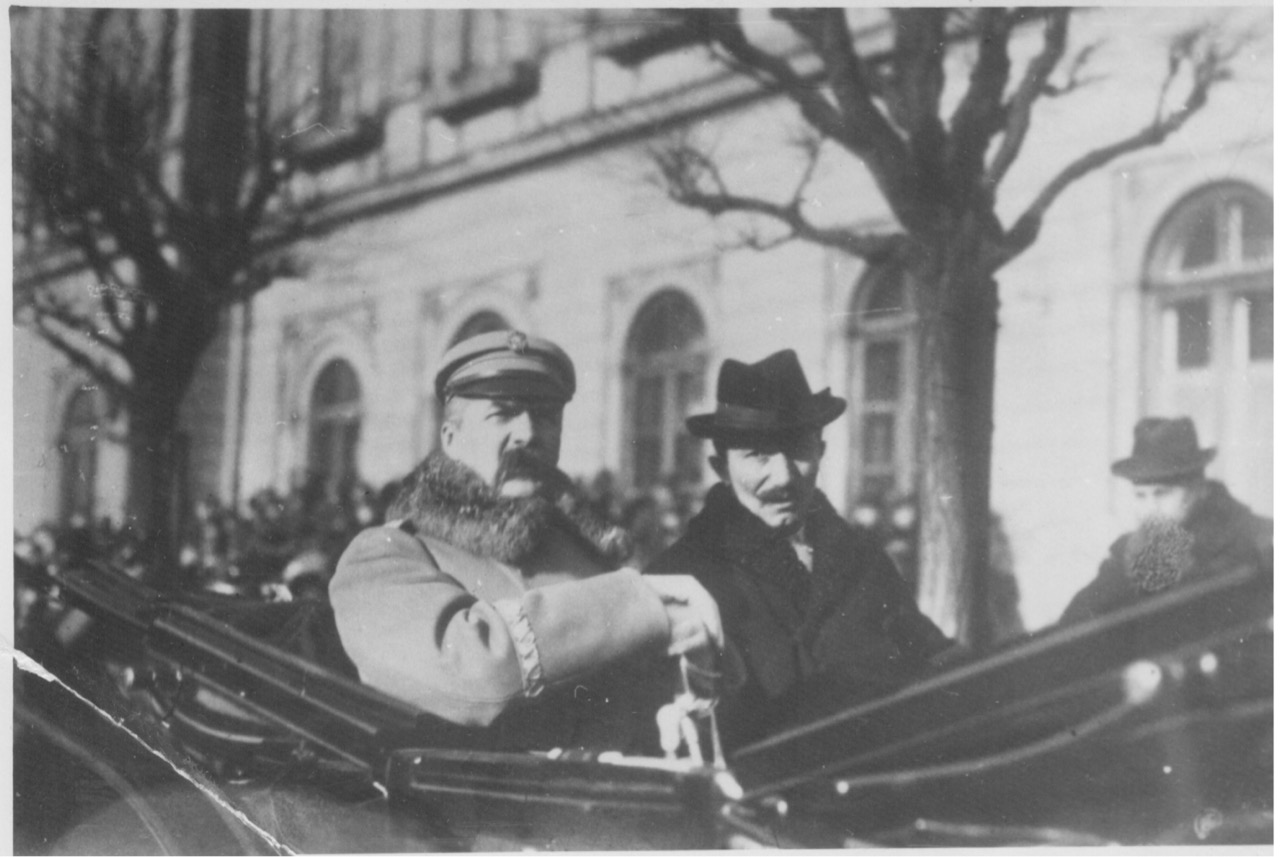
.The People’s Movement and Polish peasants repeatedly took up arms – at great personal cost and with unshakable determination – to defend the fundamental good of their homeland: its political and state independence. In 1918, People’s Party activists and their affiliated groups made an immense contribution to the rebirth of Poland, the restoration of its sovereignty and the creation of new state institutions. The repulsion of the Bolshevik invasion in 1920 marked the final act in this long and arduous struggle for independence. 15 August, the date of the dramatic Battle of Warsaw, came to be celebrated as Peasant Action Day by the People’s Party and as a national holiday by the Polish Army. Yet, people soon forgot that the ‘Miracle on the Vistula’ was, above all, the achievement of Polish peasants. Together with the National Defence Government, headed by Prime Minister Wincenty Witos, they led the defence of the newly reborn Polish state. With his Appeal to the Villagers, Witos inspired the peasants – the backbone of the nation and the Polish army at the time – to make sacrifices for the cause. In the aftermath of victory, he emerged as the enduring symbol of the ‘Peasant Action’. His cabinet also achieved significant successes in conducting a plebiscite in Silesia, passing the Constitution in March 1921 (the most democratic in Europe at the time) and concluding the Treaty of Riga with Soviet Russia on 18 March 1921.

.In the early Sejms (parliaments) of the Second Polish Republic, peasants constituted the largest group of deputies. In 1921, the Legislative Sejm (1919–1922) adopted the March Constitution, hailed as the most democratic charter in Europe at the time. Wincenty Witos served as prime minister three times, in 1920, 1923 and 1926. In the first six government administrations, the People’s Party was entrusted with nineteen ministerial posts. In September 1930, under the Sanation regime, Witos and other anti-Sanation opposition leaders were incarcerated in Brest-on-the-Bug. Witos was later unjustly sentenced to an eighteen-month prison term during the Brest trial of Centrolew’s leadership and forced into exile in Czechoslovakia. Thanks to the PSL’s efforts, the shameful verdict in the Brest trial – which also convicted other political activists – was overturned by the Supreme Court in 2023.

.Maciej Rataj, a politician of the People’s Movement and Marshal of the Sejm from 1922 to 1928, was the pride of Polish parliamentarianism. He twice saved Poland from civil war – first, after the tragic death of Gabriel Narutowicz, and again following Józef Piłsudski’s May Coup in 1926. On both occasions, he served as acting head of state. Rataj was also the principal author of the March Constitution. As Minister of Religious Denominations and Public Enlightenment in the Council of National Defence, he left a lasting mark on the Polish school system and is considered one of its greatest reformers. In this role, he played a key part in the development of public education. He authored a bill of particular importance to rural communities on the establishment and funding of public primary schools. To advance the training of unqualified teachers, he developed a set of principles and subsequently established the State Institute of Pedagogy and the Technical Academy. During his time in office, the Pedagogical Commission was formed and given the task of laying the groundwork for the development of Polish national pedagogy. His crowning achievement in public service was helping create the Polish Underground State.

.For the generation of People’s Movement activists who co-created the reborn Polish state in 1918, Władysław Reymont (1867–1925) held a special place. He was the first Nobel Prize laureate of an independent Poland, and he joined the Polish People’s Party, ‘Piast’, in 1925. To the peasants, he was the voice of their honour, dignity and right to live in peace and prosperity. 2025 marks the 100th anniversary of the death of this great Pole.
In the interwar period, the People’s Movement was the principal defender of Polish democracy, as well as the rights and freedoms of the people. Formed in March 1931 through the unification of peasant parties, the People’s Party became one of the key representatives of rural interests. It was also the largest opposition force, which protested against the Sanation regime’s violation of civil and democratic rights during the Great Peasant Strike in August 1937.
People’s Movement During the Occupation

.During the Second World War, the People’s Movement was a co-founder and one of the main pillars of the Polish Underground State. The People’s Party gained significant influence both within the government-in-exile in London and its representative structures operating in occupied Poland. After the tragic death of General Władysław Sikorski, Stanisław Mikołajczyk assumed the role of the prime minister.
The underground activities of the People’s Movement prioritised the struggle against the Nazi occupiers and the homeland’s liberation. These goals were pursued through a wide range of initiatives designed to strengthen the patriotic spirit and deepen national and class consciousness among the peasantry. The efforts included disseminating information about the situation in Poland, both inside the country and abroad, combating corruption and demoralisation, sabotaging the occupiers’ orders, helping victims of persecution and ultimately engaging in armed resistance against enemy forces.
Operating underground, the People’s Movement established a clandestine party known as the People’s Party ‘Roch’, and in 1940 formed its own armed organisation, the Peasant Battalions (Bataliony Chłopskie, BCh). On 8 October 1940, Franciszek Kamiński was sworn in as the Commander-in-Chief of this group, initially known as the Peasant Guard (Chłostra). In numerical terms, the BCh was the second-largest armed force of the Polish Underground State after the Home Army. It stood out as a unique phenomenon, with no equivalent elsewhere in occupied Europe. The armed organisation of the People’s Movement was both class-conscious and democratic. It welcomed anyone who wanted to fight the occupiers, regardless of their faith or social background.
A total of 157,000 soldiers from the BCh took part in active combat. Some 70 partisan units and around 400 Special Units of the BCh carried out several thousand combat operations. A tremendous blood sacrifice was made by more than 10,000 members of the People’s Movement and BCh soldiers who lost their lives in the struggle. Even during the war and occupation, the party’s activists undertook discussions to shape the future programme of the People’s Movement and to articulate their own vision of a post-war Poland.
The underground People’s Movement in the countryside also included other organisations established in 1941 – the People’s Labour Union ‘Orka’ (Związek Pracy Ludowej) and the Women’s Union (Ludowy Związek Kobiet, LZK), which counted around 20,000 members. Green Cross nurses, drawn from its ranks, aided BCh soldiers and those persecuted by the occupying forces. The LZK was founded in January 1942 as an independent organisation, yet it formed an inseparable part of the underground People’s Movement.
Activists from the ‘Roch’, the Peasant Battalions and the LZK, as well as members of the wider underground People’s Movement, were heavily involved in helping those who suffered the most under the occupation, particularly Jews. Thanks to the commitment of People’s Movement activists and the solidarity of the rural population, tens of thousands of people were rescued from persecution and death.
In our homeland, decisive efforts to help and protect Jews were undertaken by the Government Delegation for Poland and the Civil Resistance Directorate operating within it, headed from 1941 by Stefan Korboński, a member of the People’s Party. The movement’s activists also played a key role in the work of the Council to Aid Jews (‘Żegota’), the only secret civilian organisation of its kind in occupied Europe. It was established in 1942 by another People’s Party member, Prof. Jan Piekałkiewicz, who served as Government Delegate.
The heroic stance of Józef and Wiktoria Ulma, affiliated with the People’s Movement residents of Markowa, became a powerful symbol of sacrifice. They and their children paid the ultimate price for sheltering Jews. Another moving example of support comes from Aleksander Ładoś, a PSL ‘Piast’ activist and Polish envoy in Bern. His work arranging South American passports for Polish Jews saved countless lives during the Holocaust.
In Defence of a Sovereign State

.The years 1945–1947 marked a period of heroic struggle by the Polish People’s Party (PSL) against the communist regime – a fight for freedom and democracy paid for in blood and suffering. The political vision developed by PSL activists during the war was laid out in the programme adopted in January 1946 by the party under the leadership of Stanisław Mikołajczyk. Rooted in the ideology of agrarianism, the PSL embraced the concept of a ‘third way’ – a system positioned between capitalism and socialism. At the time, the PSL was a nationwide political force with over one million members and widespread public support, enjoying the trust of 85% of society. In the immediate post-war years, it was the political equivalent of what ‘Solidarity’ would become decades later – a patriotic mass movement fighting for national sovereignty and democratic governance. However, following the rigged 1946 referendum and the falsified parliamentary elections of 1947, brutal repression of the PSL began. The Communist authorities stamped out the party through arrests, violence and intimidation. By the end of 1947, the PSL led by Stanisław Mikołajczyk had been dismantled and ceased to exist as an independent political and organisational force. This crushing blow to Polish democracy paved the way for half a century of communist totalitarianism.
Many PSL members, including Stanisław Mikołajczyk, were forced to leave Poland. The People’s Movement was reduced to a limited political form in the shape of the United People’s Party (ZSL). Despite compromises and concessions, the ZSL managed to effectively advocate for issues vital to Polish society, particularly in agriculture and rural development.
Significant accomplishments among ZSL activists included a nationwide rural electrification campaign that they initiated and implemented from the ground up, as well as the construction of hundreds of schools and cultural centres. Legal aid offices operated under the district branches of the ZSL, and on market days, long queues of people seeking assistance could be seen outside. In 1972, the ZSL spearheaded changes that included ending compulsory agricultural deliveries, providing universal health insurance to farmers, and creating retirement and disability pension programs. These reforms enabled private farms to increase their income and compete more effectively with the cooperative and state-owned agricultural sectors. It was a period of significant progress for Polish individual farming.
Transformation, Full Autonomy and Unification of the PSL

.ZSL activists made a huge contribution to the political transformation of 1989. Roman Malinowski, Marshal of the Sejm and president of the ZSL, was a co-founder of the peacefully formed coalition government that ended the period of real socialism in Poland and prevented a social revolution. The Party’s initial role in the transformation is demonstrably crucial, as Tadeusz Mazowiecki’s government was formed through the support of the People’s Movement MPs and the subsequent coalition with Solidarity and Democratic Party MPs on August 17, 1989. We all remember the famous photograph of Roman Malinowski, Lech Wałęsa and Jerzy Jóźwiak. The first free government formed by the Polish People’s Party included Czesław Janicki as Deputy Prime Minister and Minister of Agriculture and Food Economy, Aleksander Bentkowski as Minister of Justice and Andrzej Kosiniak-Kamysz as Minister of Health and Social Welfare.

.With the reforms introduced by ‘Solidarity’, the People’s Movement became fully independent again. It came to an agreement with the surviving PSL groups in the west and its members across the country. This led to the unification of PSL–Odrodzenie (PSL–Revival), led by Kazimierz Olesiak from the Wilanów PSL, supported by many prominent former activists of the party. On 5 May 1990, the Congress of Unity of the Polish People’s Party was held in the auditorium of the Warsaw University of Technology. It was a politically significant event that crowned the process of uniting various peasant parties and communities. During the Congress, a resolution was adopted to merge the Wilanów PSL, PSL–Odrodzenie and several regional organisations of PSL ‘Solidarity’ under the name Polskie Stronnictwo Ludowe (Polish People’s Party), with a commitment to uphold and continue the ideological legacy of the 1946 PSL programme. The party was to be grounded in the principles of agrarianism and Christian values.
It was acknowledged that the re-established PSL is the direct continuation of the PSL of 1946, drawing on the heroic traditions of the People’s Party ‘Roch’ and the Peasant Battalions, as well as the ideological and educational legacy of the Rural Youth Association of the Republic of Poland ‘Wici.’ Today’s PSL refers to the heritage of the interwar peasant parties and bases its activity on peasant, national and Christian values. Its symbols are the green clover, green banners and the anthem Rota.
PSL for Poland

In July 2020, to mark the 125th anniversary of the Polish People’s Movement, PSLrepresentatives laid wreaths at the Wincenty Witos monument on Trzech Krzyży Square in Warsaw.
.The People’s Movement’s vision of a just and democratic state – a state of balance in politics, the economy and international relations – remains relevant today and may continue to be so in the future. The historically developed value system of the People’s Movement, with its emphasis on nonconformity, realism, tolerance, respect for diverse viewpoints, compromise and constructive coalition work, has proven to be valid, particularly in political practice. This is best evidenced by the actions taken by the People’s Movement in the Third Republic of Poland in service of the state and society.
The application for Poland’s membership in the European Union, submitted on 5 April 1994, came from a Polish People’s Party leader, Prime Minister Waldemar Pawlak.
The foundation for Poland’s accession to NATO was laid on 2 February 1994, when Prime Minister Waldemar Pawlak signed the Framework Document for the Partnership for Peace during his visit to NATO Headquarters in Brussels.
We played an active role in creating two of the greatest achievements of a free Poland: local governments and the system of agricultural self-government.
During Tadeusz Mazowiecki’s tenure, we contributed to building an independent judiciary and establishing the National Council of the Judiciary.
Our party also contributed hugely to the adoption of the current Constitution of the Third Republic of Poland. Marshal of the Sejm, Dr Józef Zych, served as Chairman of the National Assembly, which passed the Constitution on 2 April 1997. Zych held this position between 1995 and 1997, with Adam Struzik – then Marshal of the Senate – acting as Deputy Chairman of the Assembly.
We successfully negotiated the terms of Poland’s agricultural accession in Copenhagen in 2002, with Deputy Prime Minister and Minister of Agriculture Jarosław Kalinowski leading the talks.
We laid the foundation for effective social policy long before the introduction of the 500+ programme. It was we who introduced the ‘Kosiniakowe’ benefit, the longest parental leave in Europe, the Large Family Card, the ‘zloty-for-zloty’ income principle, tax relief for workplace nurseries and a range of programmes for senior citizens.
Today, as a brutal war continues beyond our eastern border, ensuring Poland’s security and peace has become paramount. Within the Ministry of National Defence, we are building a strong, modern army, forging reliable alliances and raising public awareness. Including expenditures from the Armed Forces Support Fund, Poland’s defence spending in 2025 is set to reach a record PLN 186.6 billion.
In his testament, Wincenty Witos wrote, ‘A free homeland and an independent state are the greatest and most precious treasures of every human being, to which all else should be sacrificed. But a homeland cannot be merely a name – it must be a reality, a mother to all, offering equal rights and equal duties. A homeland can only truly be free when every citizen is free.’
.For us, members of the Polish People’s Party, this is not only a legacy but also a guiding principle and a lasting commitment. One that we are determined to uphold, regardless of the circumstances we face or our own imperfections.
